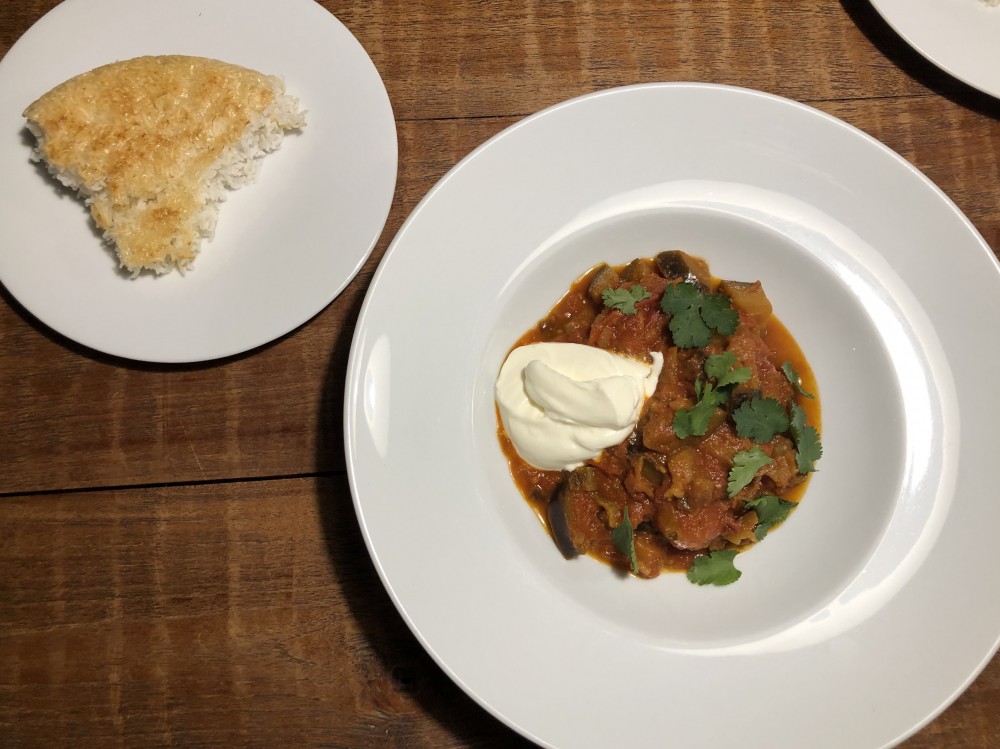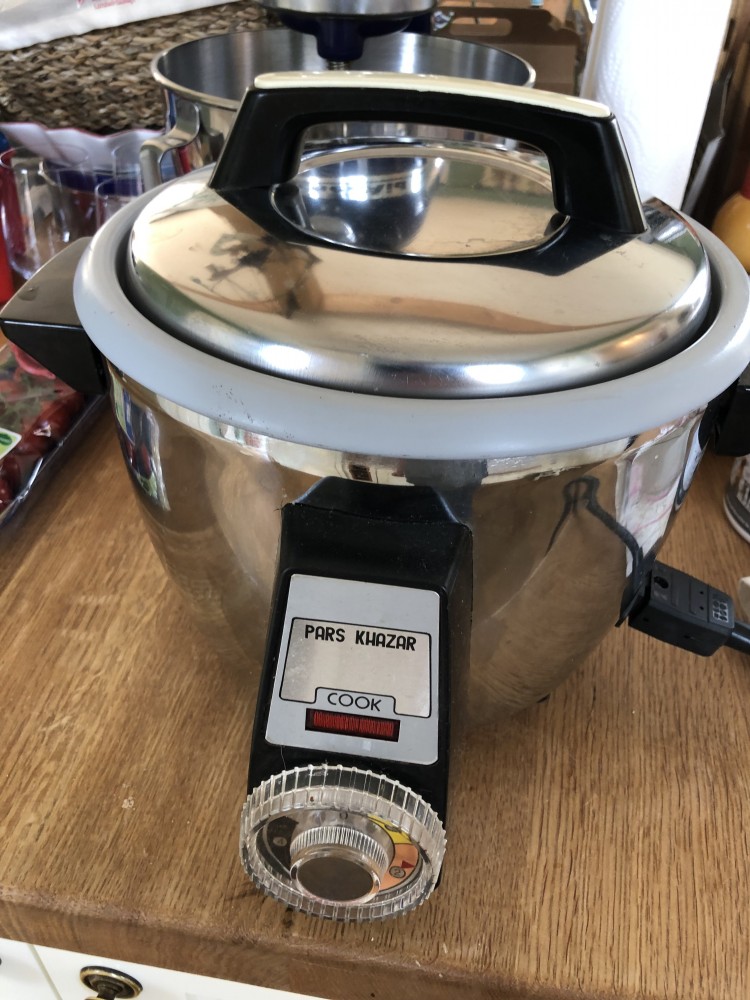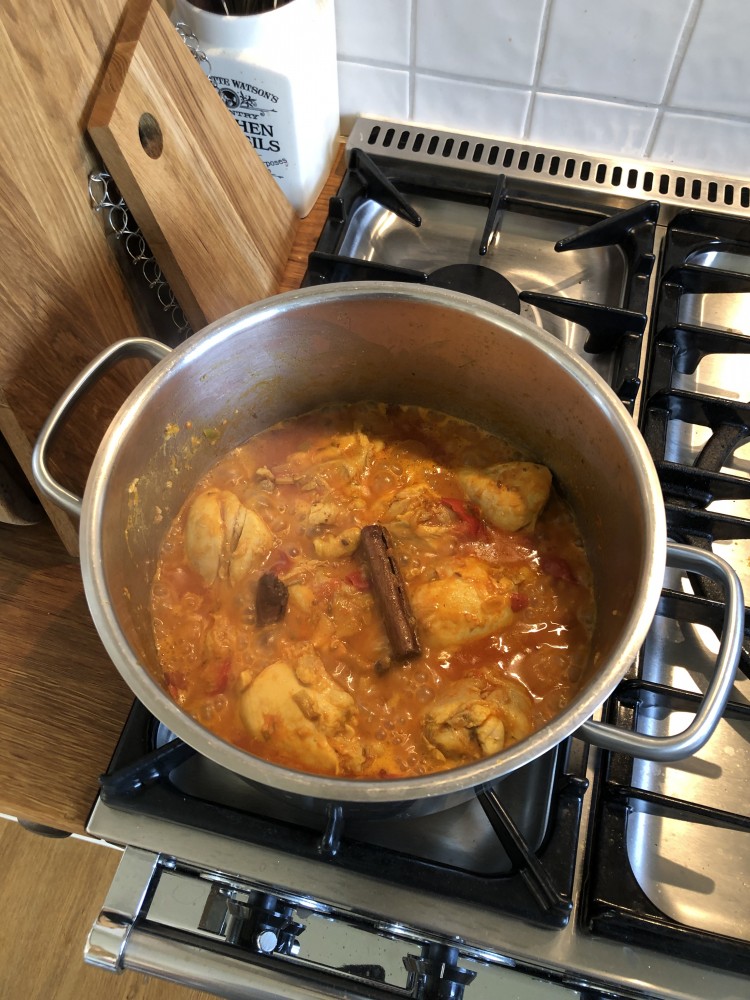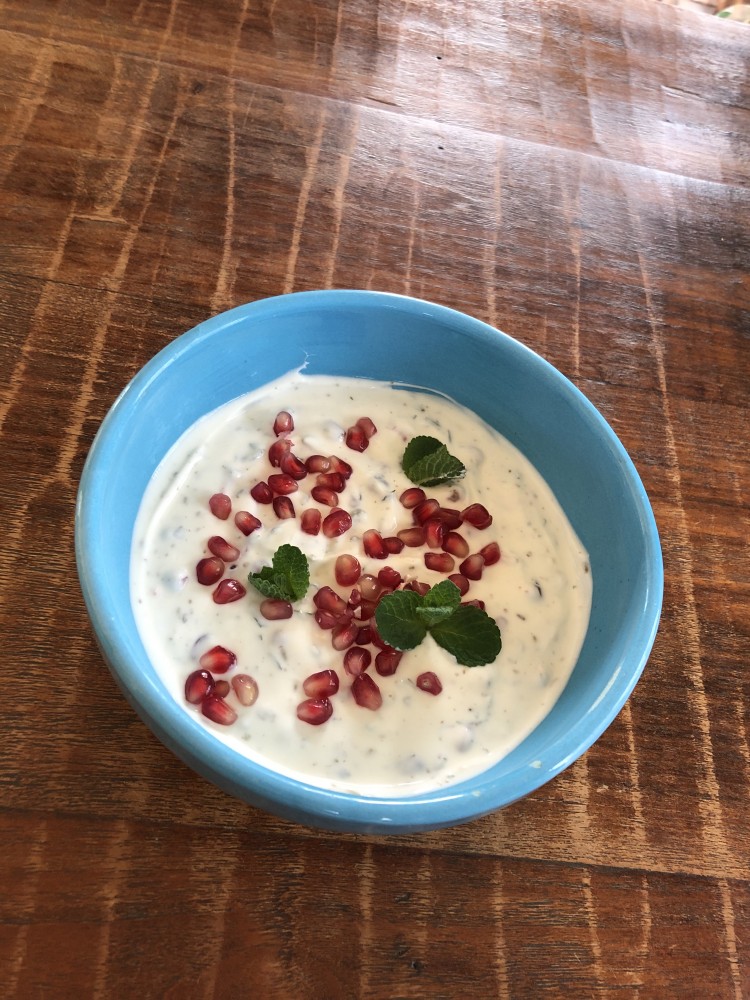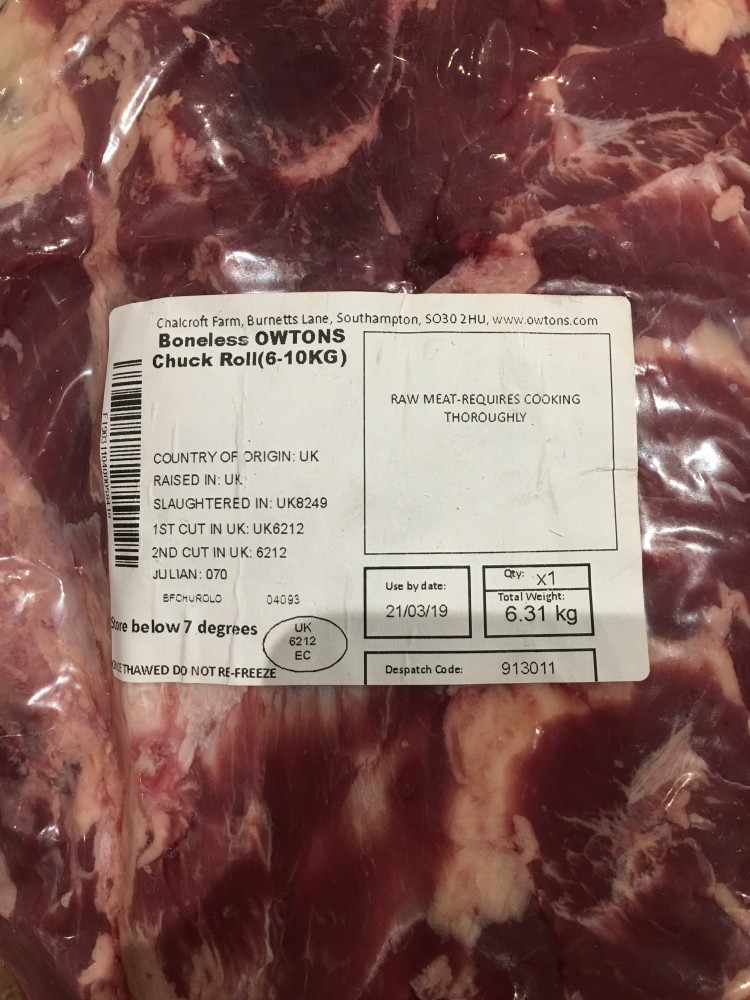Iron Chef WAYCT - What Are You Cooking Today
-
Since we buy a lot of cooked rotisserie birds (c'mon, they're delicious, cheap, and convenient), which often have pathetic wings, I'm a big fan of not eating the wings and using them with the carcass in the stock. This gets you some gelatin and body in tbe broth.
-
@Chris They sure do add flavor. Bad flavor. Onion skins, peppers, carrot peels, etc. add bitter/off flavors. The old saying "shit in, shit out" applies here. If I'm going to go through all of the trouble making a stock, and ultimately making a soup or cooking with it, it had better be consistent and tasty. I wouldn't eat pepper pith and onion skins, so I'm not putting it in my stock.
@mclaincausey If you want to make good stock and not be wasteful, compost your vegetable waste and make beautiful topsoil. Our compost bin in VA turned out the most beautiful, richest soil I've ever seen. Most of it was from lawn clippings and kitchen waste (stuff that I won't put in chicken stock
 , coffee grounds, banana peels, etc.), but never any meat or dairy so it never attracted animals.
, coffee grounds, banana peels, etc.), but never any meat or dairy so it never attracted animals.@JDelage If clear soup like consommé is on the menu, a strict mire poix, bouquet garni, and an egg white raft to collect the impurities are all that stock is getting.
Sorry guys, if we start talking about food, I get pretty serious and even more opinionated than usual

-
Yep composting is on our roadmap, but we have to put in the garden first.
I definitely wouldn't use onion skin, but I don't mind the flavor of carrot peel and typically don't peel them when I eat them raw.
-
One thing to consider about the "garbage in, garbage out" maxim though: would you eat a raw potato? And plenty of animals are inedible, or would be unpleasant to eat, prior to cooking. Cooking transforms things, so I don't think it's necessarily fair to generally state that what goes into something has to be delicious or even edible before it goes in.
-
More vegan curry fun. Sweet potato, red lentils and chickpeas in what can only be described as spice bomb of a sauce utilising whole mustard and caraway seeds, whole cumin, cloves, cinnamon as well as powdered turmeric and coriander. The sweetness from the sweet potato sets it all off.

-
One thing to consider about the "garbage in, garbage out" maxim though: would you eat a raw potato? And plenty of animals are inedible, or would be unpleasant to eat, prior to cooking. Cooking transforms things, so I don't think it's necessarily fair to generally state that what goes into something has to be delicious or even edible before it goes in.
You're absolutely right, but we're talking about a classic base for countless dishes across several cuisines. Cooking does transform things, but in the case of stock (which is what we're discussing), you get out of it what you put into it. I wouldn't eat carrot peels or pepper pith before or after cooking due to their bitterness, and it doesn't add anything flavor-wise to your end product that make it worthwhile.
Don't want to take my word for it? Here's the Cook's Illustrated take on carrot peels:
https://www.cooksillustrated.com/how_tos/5864-the-importance-of-peeling-carrots
"To test whether peeling carrots has a noticeable effect on their flavor or texture, we compared batches of scrubbed unpeeled carrots with peeled carrots. We tasted the samples raw, cut into coins and glazed, and roasted in a 425-degree oven.
Although a few tasters found the unpeeled raw carrots to be earthier tasting than their stripped siblings, most were distracted by their “dusty exterior” and “bitter finish.” The results were even more clear-cut when the carrots were cooked. Tasters unanimously preferred the peel-free carrots in the glazed and roasted samples. In both cases, the skins on the unpeeled carrots became wrinkled, tough, and gritty. Their flavor was “again earthier, but not in a good way” and they weren’t particularly appealing looking. On the other hand, the peeled versions remained bright orange, tender, and sweet."
Or some deeper reading:
"Bitterness is considered as an undesirable taste of carrots. Quantitative chemical analysis of potential bitter compounds of different carrot genotypes was combined with sensory analysis in order to identify key compounds likely to be responsible for the bitterness of carrots. Eight carrot genotypes (‘Bolero’, ‘Mello Yello’, ‘Nairobi’, ‘Tornado’, ‘Purple Haze’, ‘Line 1’, ‘Line 2’, and ‘Line 3’) representing extremes in sensory-perceived odour, flavour, and taste. Potential bitter compounds like polyacetylenes, isocoumarins and phenolic acids were quantified in the peel and the corresponding peeled carrot, and their contribution to bitterness in raw carrots was analysed by sensory profiling using multivariate data analysis. Falcarindiol and a di-caffeic acid derivative were highly related to bitterness in contrast to falcarinol and other potential bitter compounds. Falcarindiol and the di-caffeic acid derivative were primarily present in the peel whereas falcarinol was almost evenly distributed in the root. Investigation of bitterness revealed that high sugar content to some extent could mask the bitter perception of carrots. As falcarinol is the most bioactive of the carrot polyacetylenes the results of the present study indicate that there is a basis for improving the health effects of raw carrots without affecting sensory quality."
-
Lovely thank you. I feel I may need one. Can you put a spice crust on the rice with it?
Yes I think so, you just had to be aware that they can be burnt when roasted to long. The bottom can also layerd with potatoe slices or the rice can be filled with anything like vegetables or meat which can be cooked together with the rice.
-
Yes I think so, you just had to be aware that they can be burnt when roasted to long. The bottom can also layerd with potatoe slices or the rice can be filled with anything like vegetables or meat which can be cooked together with the rice.
Hmm, my rice cooker does the same thing, but I always considered it a flaw. I like this approach. I'm going to have to experiment with ways to make a tasty rice puck.
-
Did a nice Italian-style braised kale today that I thought I'd share.
Chop up some shallot and sautee in a large vessel (a wok or large pan that you can cover) in olive oil until glassy.
Add some red wine vinegar and thinly shaved garlic (I used 2 cloves) and simmer covered.
Add an equal part (to the red wine vinegar) of balsamic vinegar and some Italian herbs (I just used a dried blend that was actually German in origin). Crack some pepper, red pepper flakes, salt, and let simmer covered until the garlic is cooked, stirring as needed.
Probably added an equal part of water to the liquid.
Add to bunches of de-veined, chopped kale and braise in the liquid, stirring when not covered. Taste as you go and adjust seasoning. It's easiest to use tongs to make sure all kale pieces are dredged through the braising liquid.
Right when the bright green of the kale is about to dull, add the zest of one lemon and stir it in. Take off heat, ready to serve.I think that adding tomato to get a fourth acid in the mix would have been a great idea too. We had this with pork tenderloin.
-
You could just add more red wine vinegar before serving. The cooked vinegar will probably have lost a lost of its acidity. In fact, you could cook with red wine, and finish with vinegar…
Kale is pretty darn good. The problem is that you have to remove all those center stems, leaf by leaf...
-
The lemon zest is a different kind of acid that comes out much different than adding more red wine vinegar. Another option is pickling lemon, but having tried both the zest is better.
Kale is super easy to process. Try gripping the fat end of the stem making a ring with your fingers on one hand and just pulling it through the ring with your other hand.. Each leaf takes seconds using this method.




